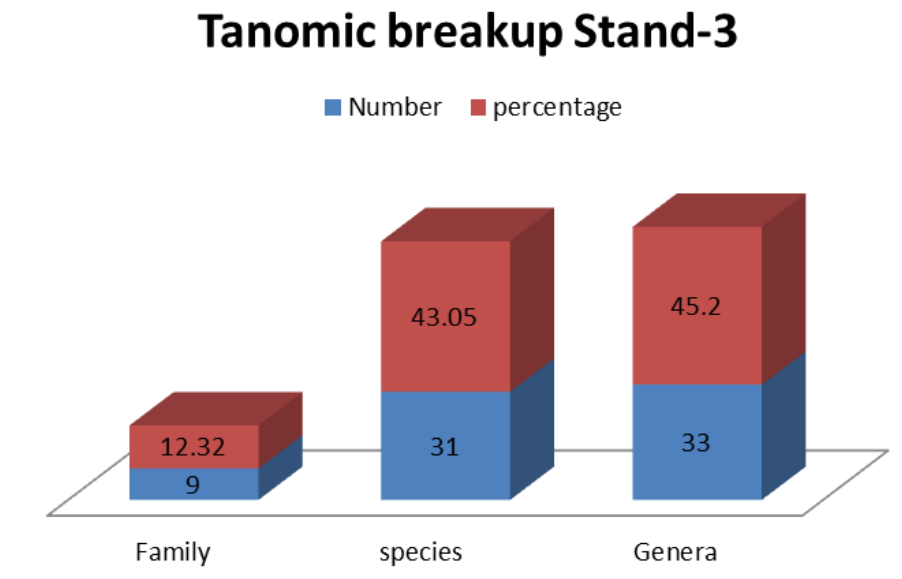Inventory and Altitudinal Distribution of Plant Biodiversity Along the Nalter Expressway in Nalter Valley Gilgit Baltistan
Keywords:
Biological Spectrum, Phytosociological Study, Life Form, Quartets, StandAbstract
The present study was conducted in 2020-2021 to record the inventory and altitudinal distributions of plants and biodiversity in Nalter valley. The study area is situated at 36 N and 74 E, with 27,206 ha area in the Karakoram highlands. It is 40km away from Gilgit city. The purpose was to explore the natural floral inventory, life-form structure, and the biological spectrum of the plant biodiversity. This study recorded 126 species belonging to 106 genera and 48 families. The life forms of the collected species were 40 Hemicryptophytes (H), 8 Therophytes, 50 Chaemephyte, and geophytes 3 species, and 25 phanerophytes. While the habit categories of the recorded flora were analyzed with the help of Theophrastus classification. The categories of the recorded flora were 88 herbs, 113 shrubs,9 subshrubs, and 18 trees which contribute to the flora of the study area. The phytosociological studies were also carried out to recognize the dominant taxa, habit category, and the dominant life form in the study area. For this study, we divided the study area into three stands. In each stand, we placed 20 quartets to recognize the dominant taxa based on IVI. The phytosociological studies provided the required information from each stand like dominant habit categories, life forms, and dominant taxa along the Nalter expressway.
References
A. Strauss, “A method for complete plant taxon and site inventories in large forest areas with the help of orienteering maps, as exemplified by target forests in Switzerland,” PLoS One, vol. 14, no. 12, p. e0225927, Dec. 2019, doi: 10.1371/JOURNAL.PONE.0225927.
M. Thakur, V. K. Santvan, and & A. Nigam, “Floristic Composition & Biological Spectrum of Darlaghat Wildlife Sanctuary, Solan, Himachal Pradesh, India,” New York Sci. J., vol. 5, no. 12, pp. 1–14, 2012.
Charles R., “Managing Plant Material Inventory - Ornamental Production Ornamental Production,” Hall Extension Economist-Horticultural Marketing Texas A&M University. https://aggie-horticulture.tamu.edu/ornamental/economic-fact-sheets/managing-plant-material-inventory/ (accessed Aug. 23, 2022).
S. Ferrier, “Mapping spatial pattern in biodiversity for regional conservation planning: where to from here?,” Syst. Biol., vol. 51, no. 2, pp. 331–363, Apr. 2002, doi: 10.1080/10635150252899806.
C. Körner, “Why are there global gradients in species richness? Mountains might hold the answer.,” Trends Ecol. Evol., vol. 15, no. 12, pp. 513–514, Dec. 2000, doi: 10.1016/S0169-5347(00)02004-8.
J. A. Grytnes and J. H. Beaman, “Elevational species richness patterns for vascular plants on Mount Kinabalu, Borneo,” J. Biogeogr., vol. 33, no. 10, pp. 1838–1849, 2006, doi: 10.1111/j.1365-2699.2006.01554.x.
C. Körner, “The use of ‘altitude’ in ecological research,” Trends Ecol. Evol., vol. 22, no. 11, pp. 569–574, Nov. 2007, doi: 10.1016/J.TREE.2007.09.006.
R. E. Ricklefs, “A comprehensive framework for global patterns in biodiversity,” Ecol. Lett., vol. 7, no. 1, pp. 1–15, Jan. 2004, doi: 10.1046/J.1461-0248.2003.00554.X.
M. Xu, L. Ma, Y. Jia, and M. Liu, “Integrating the effects of latitude and altitude on the spatial differentiation of plant community diversity in a mountainous ecosystem in China,” PLoS One, vol. 12, no. 3, p. e0174231, Mar. 2017, doi: 10.1371/JOURNAL.PONE.0174231.
I. Ismail et al., “Forest inventory and analysis in Gilgit-Baltistan: A contribution towards developing a forest inventory for all Pakistan,” Int. J. Clim. Chang. Strateg. Manag., vol. 10, no. 4, pp. 616–631, Jun. 2018, doi: 10.1108/IJCCSM-05-2017-0100/FULL/PDF.
M. V. Lomolino, “Elevation gradients of species-density: Historical and prospective views,” Glob. Ecol. Biogeogr., vol. 10, no. 1, pp. 3–13, 2001, doi: 10.1046/j.1466-822x.2001.00229.x.
M. R. Willig, D. M. Kaufman, and R. D. Stevens, “Latitudinal Gradients of Biodiversity: Pattern, Process, Scale, and Synthesis,” Annu. Rev. Ecol. Evol. Syst., vol. 34, no. May 2014, pp. 273–309, 2003, doi: 10.1146/annurev.ecolsys.34.012103.144032.
G. Rahbek, “The relationship among area, elevation, and regional species richness in neotropical birds,” Am. Nat., vol. 149, no. 5, pp. 875–902, 1997, doi: 10.1086/286028.
C. (Christen) Raunkiær, “Life forms of plants and statistical plant geography,” p. 632, 1977.
Z. K. Shinwari, “Medicinal plants research in Pakistan Medicinal plants research in Pakistan,” J. Med. plants Res., vol. 4, no. May, pp. 161–176, 2014.
J. Fang and M. J. Lechowicz, “Climatic limits for the present distribution of beech (Fagus L.) species in the world,” J. Biogeogr., vol. 33, no. 10, pp. 1804–1819, Oct. 2006, doi: 10.1111/J.1365-2699.2006.01533.X.
Z. K. Shinwari and S. S. Gilani, “Sustainable harvest of medicinal plants at Bulashbar Nullah, Astore (Northern Pakistan),” J. Ethnopharmacol., vol. 84, no. 2–3, pp. 289–298, Feb. 2003, doi: 10.1016/S0378-8741(02)00333-1.
K. Gopalakrishnan, S. Sultan, A. Govindaraj, and C. N. R. Rao, “Supercapacitors based on composites of PANI with nanosheets of nitrogen-doped RGO, BC1.5N, MoS2 and WS2,” Nano Energy, vol. 12, pp. 52–58, Mar. 2015, doi: 10.1016/J.NANOEN.2014.12.005.
Q. Abbas, R. Qureshi, A. U. N. Naqvi, S. W. Wali Khan, and I. Hussain, “Floristic inventory and ethnobotanical study of the Naltar valley (Karakoram range), Gilgit, Pakistan,” Pakistan J. Bot., vol. 45, no. SPL.ISS, pp. 269–277, 2013.
K. Sheikh, T. Ahmad, and M. A. Khan, “Use, exploitation and prospects for conservation: People and plant biodiversity of Naltar Valley, northwestern Karakorums, Pakistan,” Biodivers. Conserv., vol. 11, no. 4, pp. 715–742, 2002, doi: 10.1023/A:1015584202121.
“Exploring Rama Meadows and the isolation at Naltar - Pakistan - DAWN.COM.” https://www.dawn.com/news/1180548 (accessed Aug. 23, 2022).
“Density Formula - How To Calculate Density.” https://www.thecalculatorsite.com/articles/math/density-formula.php (accessed Aug. 23, 2022).
M. Rafay, R. Ahmad Khan, S. Yaqoob, and M. Ahmad, “Nutritional evaluation of major range grasses from Cholistan desert,” Pakistan J. Nutr., vol. 12, no. 1, pp. 23–29, 2013, doi: 10.3923/PJN.2013.23.29.
M. Khan, S. M. Khan, M. Ilyas, A. A. Alqarawi, Z. Ahmad, and E. F. Abd Allah, “Plant species and communities assessment in interaction with edaphic and topographic factors; an ecological study of the mount Eelum District Swat, Pakistan,” undefined, vol. 24, no. 4, pp. 778–786, May 2017, doi: 10.1016/J.SJBS.2016.11.018.
F. Azeem et al., “Drought affects aquaporins gene expression in important pulse legume chickpea (Cicer arietinum L.),” Pakistan J. Bot., vol. 51, no. 1, pp. 81–88, 2019, doi: 10.30848/PJB2019.

Published
How to Cite
Issue
Section
License
Copyright (c) 2022 50SEA

This work is licensed under a Creative Commons Attribution 4.0 International License.




















